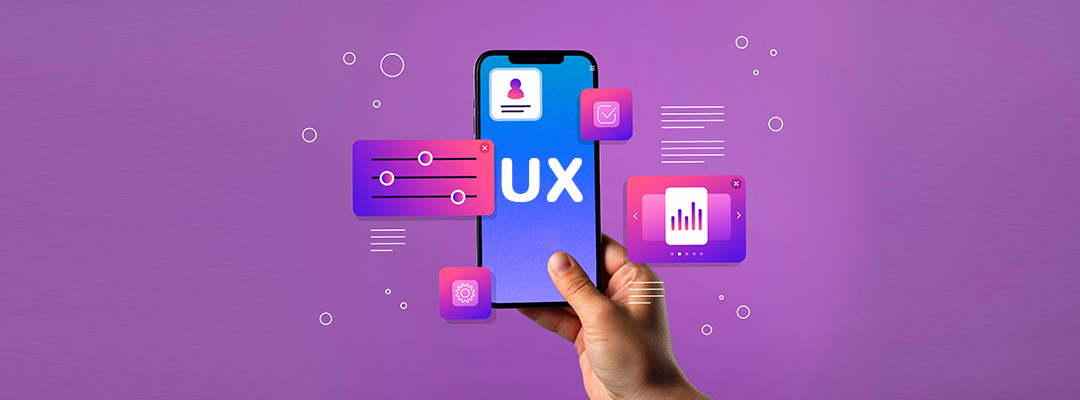Blogs
Services
Importance of UAT and Correlation with UX
Feb. 09, 2023

As a consumer, we always want the best in every service and
product we opt for, and more so wherein, digital has become one of the crucial
parts of our lives. It is important for organizations to ensure best-in-class
digital experience in the context of modern-day business. Like any consumer
product, digital platforms such as websites, applications, smart devices, and
software must be fully tested to meet the end-users specific requirements and
expectations. And now, in the present situation where the COVID-19 pandemic
pushes us to utilize and experience various digital platforms and an increased
number of competitions, it becomes more important for an organization to launch
flawless products & services.
UAT, User Acceptance Testing, might sound a bit scientific when it first crosses our eyes; however, this is something we experience in our routine life. Like when we cook something, we first taste it before serving reason being the desire to offer our best handmade recipe. Similarly, UAT in the IT industry is also of utmost importance. Suppose any digital products are released to the public with issues in functionality. In that case, it will likely bring negative feedback and impact the brand's image; hence, one can't rule out the User Experience (UX) and User Acceptance Testing (UAT).
Let me narrate a recent experience from a few weeks back. I saw an online ad mentioning "loan on the phone in 5 minutes". Following my curiosity, I opened the website link mentioned in the SMS and was quite amazed to see the website. The process was explained well, the user interphase was also fine, and I saw the option of choosing languages while surfing the website. Impressive, I said to myself; however, as I selected the language "Hindi", all my excitement vanished as the translation API did the simple translation and changed the meaning completely. My perception of the brand went negative in a second. I almost wondered if there was a hurry to launch this product in the market or that too without testing and validation from a UX perspective; whatever the reason, it had a negative impact on me as one of the potential customers.
Some little information about UAT
User Acceptance Testing is testing performed by the user or the client to verify/accept the product or system before moving into the production environment. UAT is done in the final testing phase after functional, integration, and system testing are done.
The UAT stage plays a crucial role in new launches and
modifications. Through the UAT step, we can validate whether all business
requirements have been fulfilled before releasing the product or system for
customers/end users. This step ensures that the product or software is complete
according to the functional specifications defined by the product/application
owner.
In a nutshell, UX (the sought-after output of UAT) represents a
user's experience while using a digital product. This experience can be based
on multiple factors like the feel of the product, graphics, clarity of text
& content, outcome, and more outputs influencing the user's experience.
When UX testing is
skipped, the development team runs a massive risk of launching a product with a
poor user experience. For organizations to be successful, their products need
to bring value to consumers and exceed the delivery parameters against the
perceived value in a product or service that a consumer looks out for.
User Acceptance Testing services are carried out in a dedicated
testing environment with actual data setup in a Pre-production phase to ensure
no impact on the external market.
Post-development, there are two significant steps in performing
UAT:
1. Pre-production Environment – Testing
carried out in the testing environment. The programmers are free to change and
push changes at any time for quick testing of codes and integration with other
changes. There's no fear of breaking anything in production here since it's
conducted on a test database & services
2. Production Environment – It's the
real deal. The respective product or application is pushed into the production
environment after successful signoff of the UAT. Along with the end-users or
customers, the production UAT also performed a double check on the development
& its functionality. It is done to ensure that all logic & integrations
are functioning accurately in the Pre-production environment. Production UAT is
equally important for every new launch or modification to ensure the customer
experience is in place.
While the concept of UAT and UX testing is clear, it doesn't
mean anyone can be aligned to perform these testing. It's about following the
fundamentals and keeping the maker and checker different entities. Hence,
developers should refrain from performing UAT as they are already biased toward
the product. Needless to say, the developers themselves won't do fair justice
to seeing their product from the customer's lens. UAT testing service specialists
do not have pre-bias of the product/application before it is developed, giving
them an edge over the developer in performing UX testing.
In the context and agreement of the above information, many
organizations look forward to 3rd Party professional QA testers. This is
because these professionals have the skills and experience to correctly
identify possible bugs and enhancement opportunities. These testers can also
prioritize fixing bugs basis severity, making bug fixing efficient. The team
also has tools to document bugs and provide detailed notes on observations
along with relevant artefacts, which helps developers to course correct and
improvise the product.
As a consumer, we always want the best in every service and product we opt for, and more so wherein, digital has become one of the crucial parts of our lives. The UAT stage plays a crucial role in new launches and modifications.
